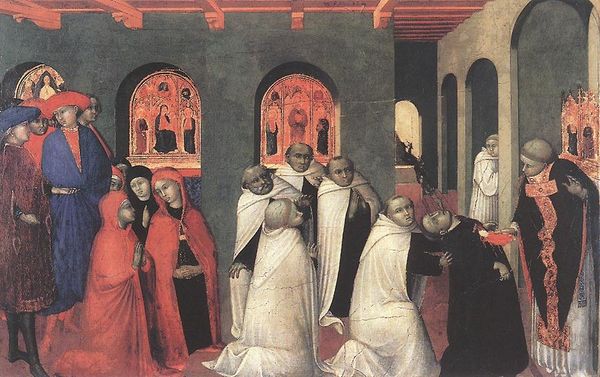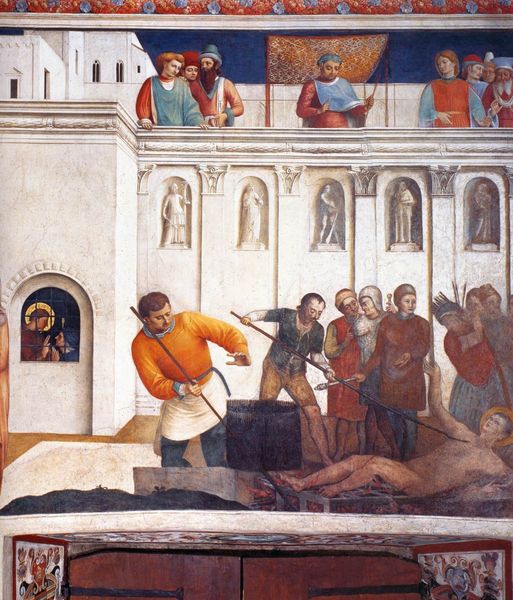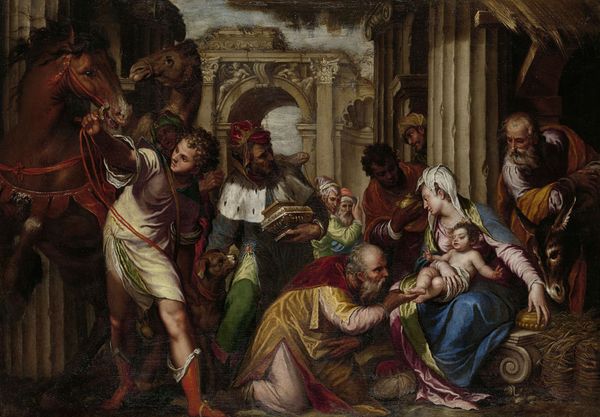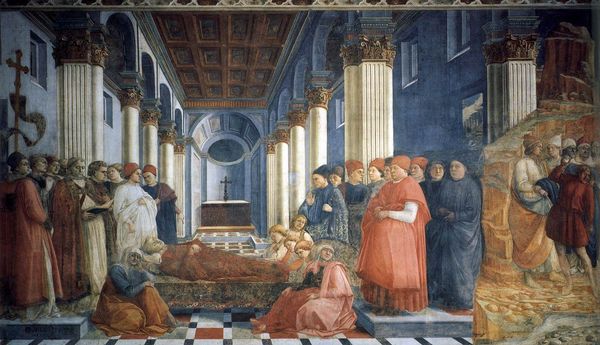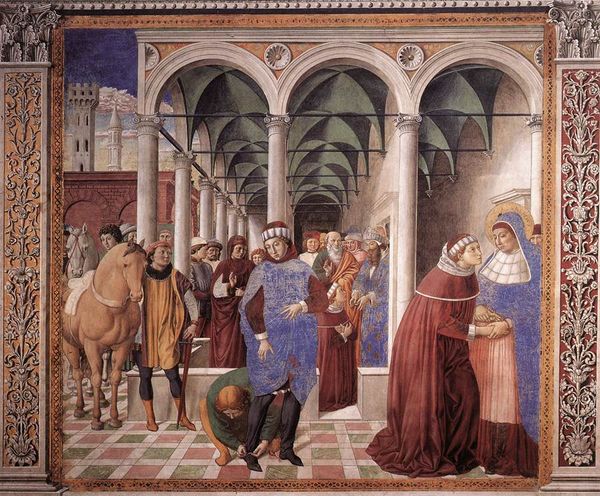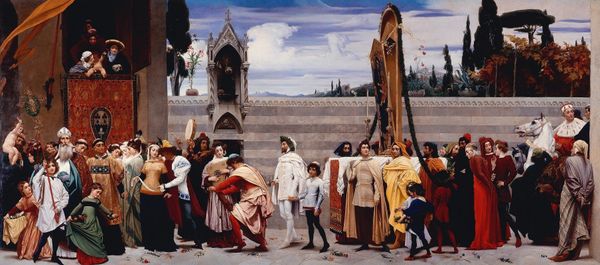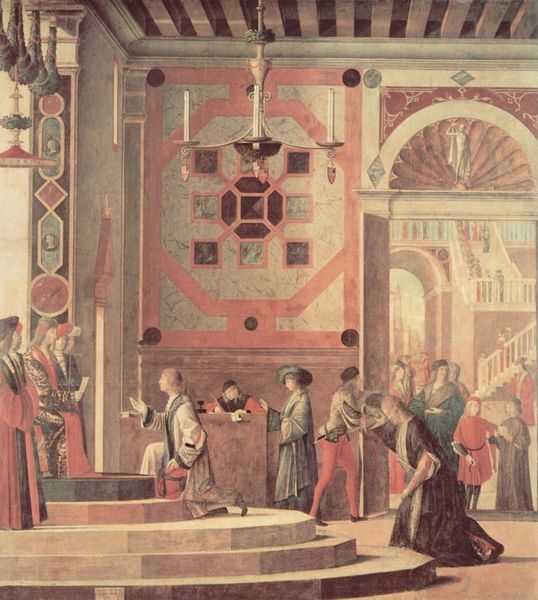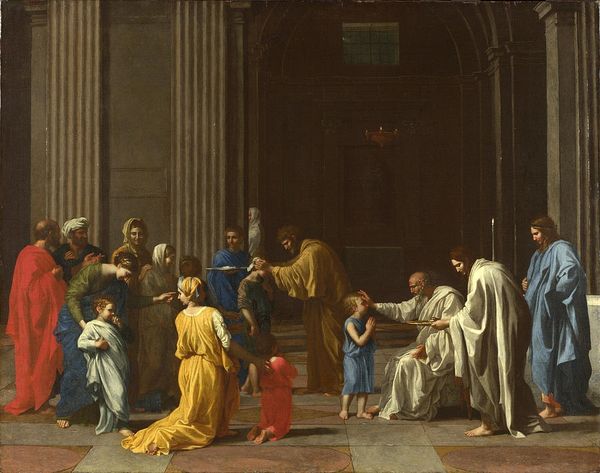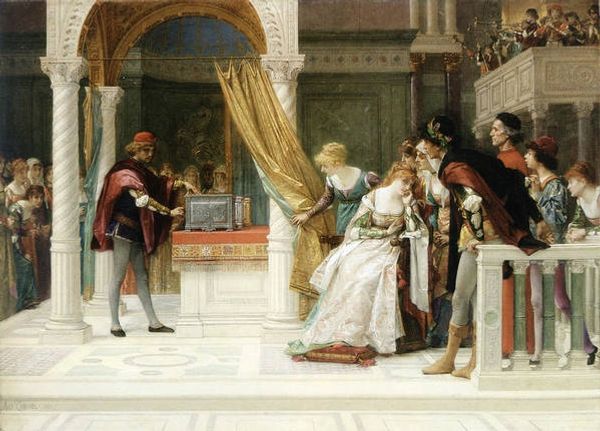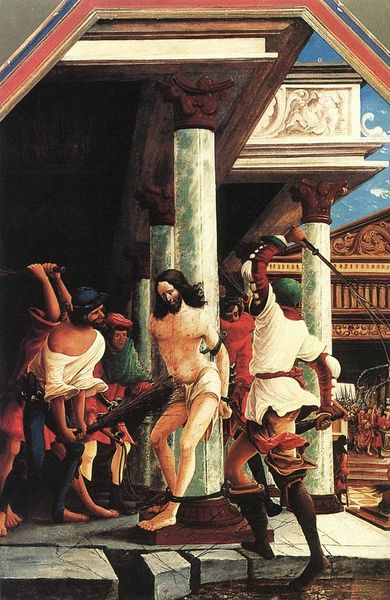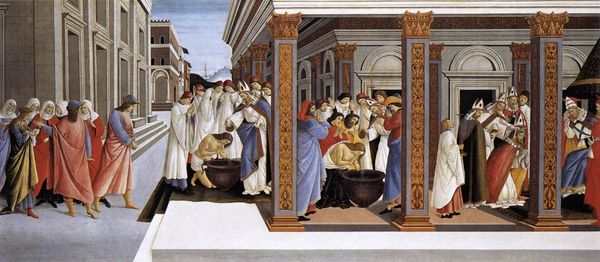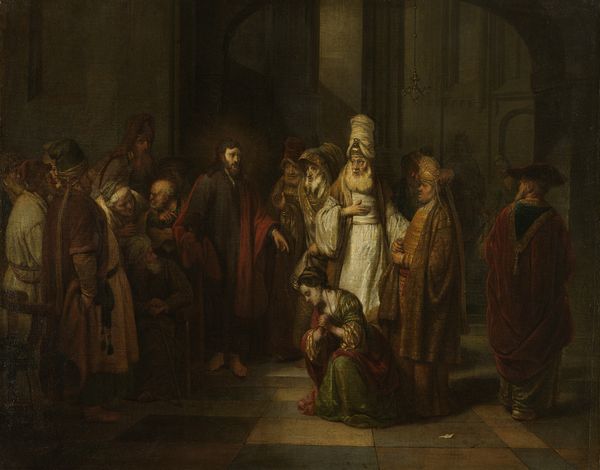
tempera, painting
#
narrative-art
#
tempera
#
painting
#
figuration
#
oil painting
#
underpainting
#
genre-painting
#
history-painting
#
italian-renaissance
#
early-renaissance
#
miniature
Copyright: Public Domain: Artvee
Sandro Botticelli painted ‘Last Miracle And The Death Of St. Zenobius’ in Florence during the early Renaissance. The painting, split into three narrative sections, reflects the values and power structures of its time, particularly the Church's influence in daily life. Botticelli presents Saint Zenobius as a figure of almost mystical healing power, interceding in life-or-death matters. In this painting, we see the body of the saint as a site for miracles. The figures surrounding the saint convey intense emotion. Note how Botticelli captures the physical and emotional distress of the figures, from the pallor of the sick to the grief of the mourners. The women are particularly expressive, their gestures and facial expressions filled with sorrow. The emotional intensity of the work is striking. While the painting reflects traditional religious narratives, it also provides a window into the personal and collective experience of faith, death, and the hope for miracles.
Comments
No comments
Be the first to comment and join the conversation on the ultimate creative platform.
